humane websites
This is an extended text version of a talk first presented at SFScon in November 2016. A video recording is available here.
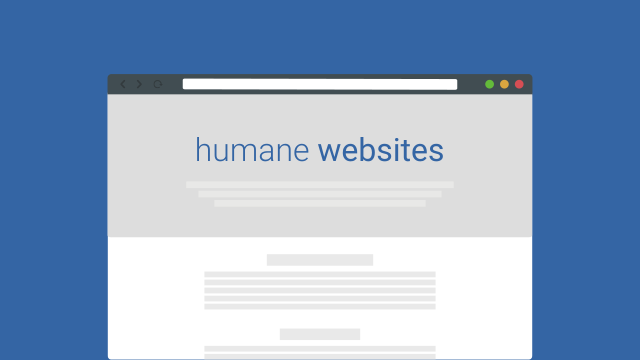
Good afternoon.
There is one thing which keeps amazing me about technology. As we develop technology further and further it starts to disappear. Technology ceases to be understood as a such. It becomes a part of our general environment and we don’t recognise it as technology anymore.
If you look around you, you’ll find many examples of this. This house we’re in, the streets and cars outside this building. These are all technologies that have disappeared and outside of professionals nobody thinks about them as technologies anymore.
So let me ask you this. How many here did use an elevator in the last 7 days? (After trying to remember whether they actually did, about three quarters of the audience raises their hands)
It’s interesting what just happened. Most of you had to think hard about whether you actually used the elevator in the last days. You see, the elevator is already an integral part of our environment. Today we enter an elevator, press the button for which floor we want to go to and we’re off. But this wasn’t always the case. Before electronics, over a century ago, riding an elevator was a much different experience.

Early elevators were heavy machinery primarily used in factories and industry. You have to imagine large, steam powered machines. With the rise of taller buildings and skyscrapers, other means of transportation inside a building were needed and so these huge, highly mechanical machines slowly moved into civilian buildings. The first commercial passenger elevator was installed in New York in 1857.
As you can imagine, technology was not really mature and the industrial origin of these machines didn’t make this easier. Along with mechanical failures, early elevators were extremely complicated to use. They had a lever for speed, direction and to stop the elevator properly level with the floor. Of course if you failed to stop it or stop it at the right position you would be in for a hell of a ride. It was almost an art and acquired skill to correctly operate an elevator.
Accidents were a nearly everyday occurrence. And there were almost daily reports on deaths in early elevators due to people falling down shafts, being crushed or caught between the floors.
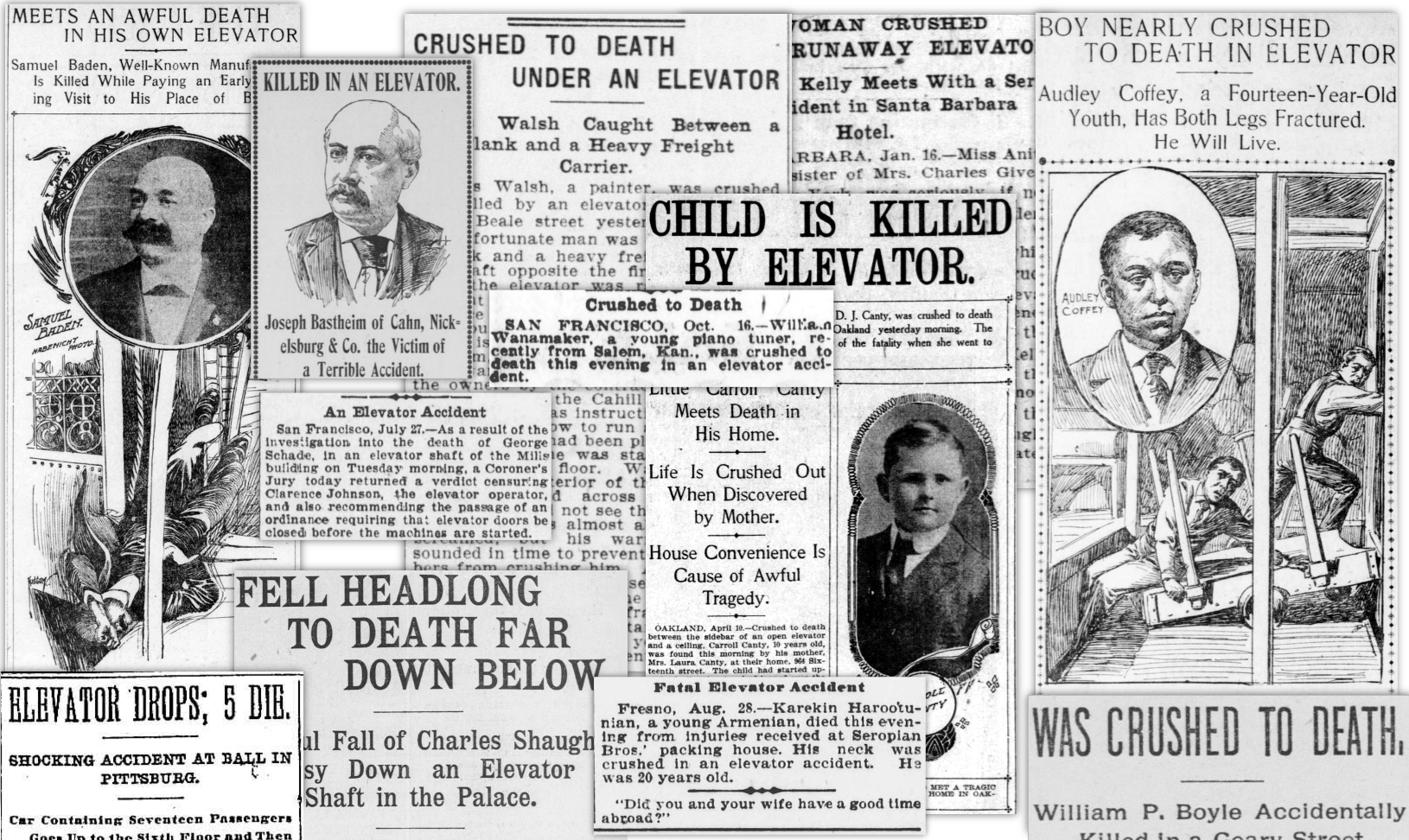
A change was needed and so businesses started using operators who ensured safe transportation of their passengers and automating the complex and sometimes dangerous mechanisms of an elevator. Later on, the operators were also responsible for announcing the floors and shops to the passengers. For example, a customer would enter the elevator, tell the operator what they were looking to purchase, and the operator would know exactly what floor it was on.
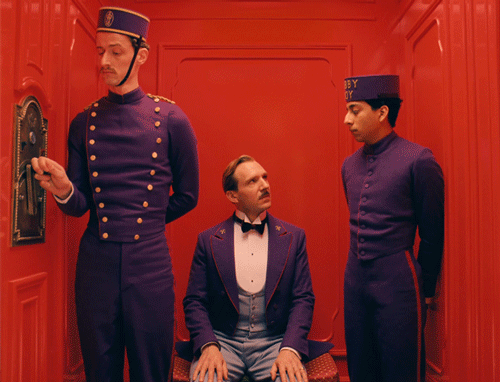
Some businesses used female elevator operators as a valuable public relations tool. They greeted anyone who was visiting the building and helped them to find the place they were looking for. Mostly, these elevator operators consisted of young girls who had attended charm school.
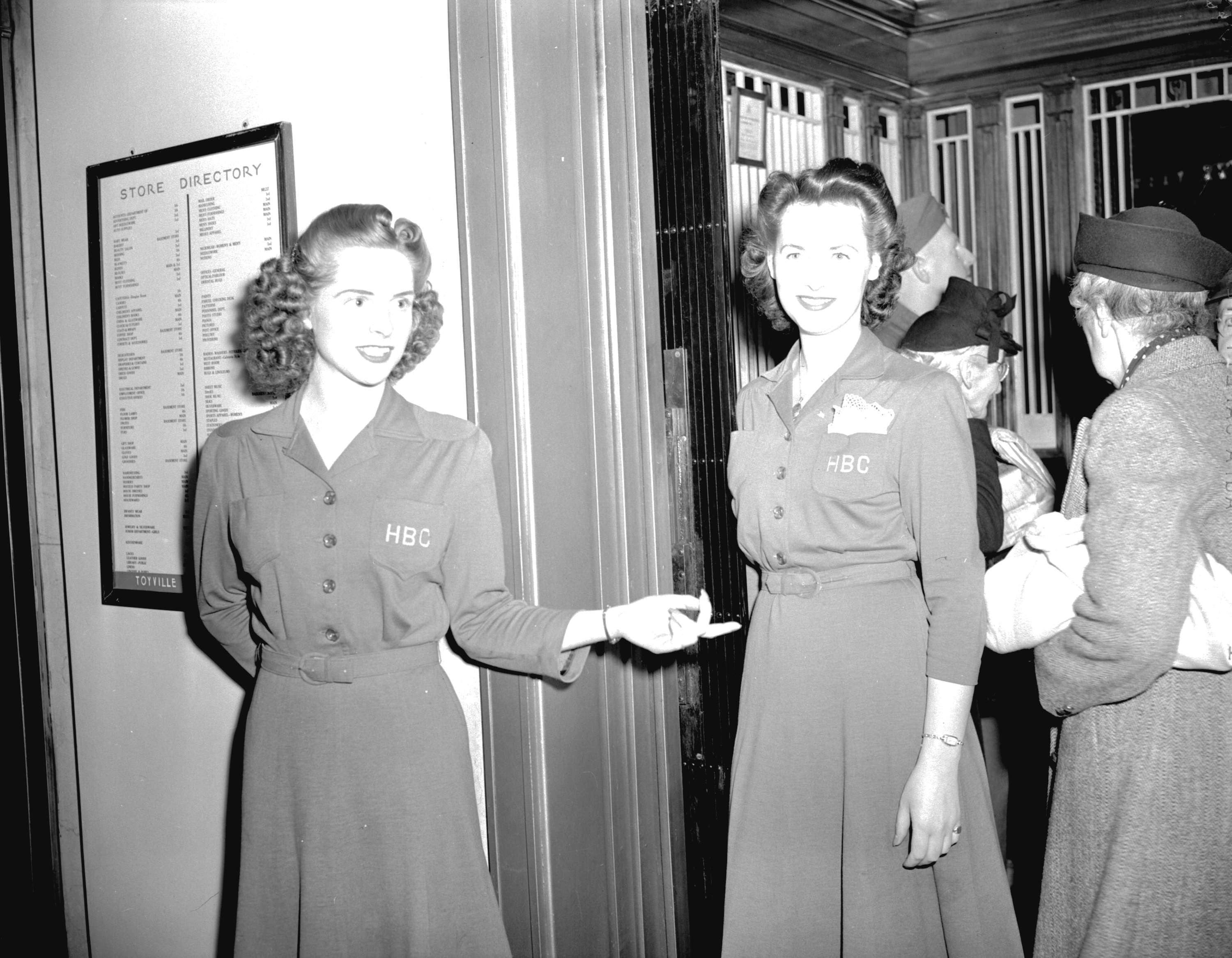
And this brings me back to my initial remark. As long as a technology is not fully integrated in our environment, a human factor is needed which eases us into the interaction with that technology. And this takes time. For example, by 1900, completely automated elevators were available, but passengers were still reluctant to use them. Only after the second world war, when the technology was sufficiently advanced and emergency stop buttons were adopted, people started using fully automated elevators.
As professionals in the computer industry we love discussing the latest trends of JavaScript frameworks, CSS pre- and postprocessors or our front- and backend architectures. As designers we love to talk about the presentation of our websites. As business professionals we love to talk about our products and services. And in all that mess we forget about the human side in our websites. We’re focusing too much on technology, on design, on business — too much on ourselves — and to little on how our products and services help our clients solve their problems.
We are basically presenting an empty elevator shaft and telling our visitors to jump.

You see, technology is utterly important, but the human side trumps technology. A shitty website which solves a user’s problem is pitiful but works. We can all think of enough examples. What is desperately needed is a human connection in our websites, a kind of elevator operator who eases the interaction of our visitors with the products and services we offer.
So what are websites anyway? To me, websites are processes.
Let me explain: All websites “sell” something, whether you are selling an actual product, a service, you want to do outreach, get more attention or just simply share your ideas. Simply buying a domain and putting some stuff up there is not enough.
So what if your website would be a real person, akin to an elevator operator. What would be their tasks and responsibilities? And how would they respond if a person came up to them and asked “Can you help me”?
You see, the main reason why websites fail is that they fail to answer that simple question.
We’re not talking about technology here. This is more about user experience than anything else. I am completely technology agnostic in this case. And your clients will be as well.
It takes time to get visitors interested and willing to buy your service or product. And this is a process. Take any sales professional and you’ll find an efficient, tested process they stick to. And we can do the same with our websites.
It is important to note, that the only goal of each step in this process is to help your visitors get to the next step. This is not about you, it is about how you can help your clients.
Let’s have a look at the process in detail.
It starts with strangers coming to your website. It’s no longer just about optimizing your website for search engines, doing SEO and hoping for the best. It’s about optimizing your presence across the web. And above all your presence in the real world as well.
Maybe they found you on Google, but maybe someone recommended your product or service, they saw you at an event, got your business card, or read some article you wrote a year ago. They have a look at your website and in case they are interested, they want to learn more.
Now, do you know how long people normally stay on your website? If you’re thinking about “not very long”, then you’re very right.
There have been some studies, that most people leave your website in the first 10 to 20 seconds. An average reader can read about 180 words per minute. That would be between 30 and 60 words until the majority leaves your website. But probably it is less than that. If you don’t believe me, just check your browsing history and find quite a few websites you can’t even remember to have visited.
This is not necessarily terrible news. You can easily gain several minutes of user attention, the only thing you must do is clearly communicate your value proposition within the first 20 seconds.
But how do you find this value proposition, one that actually works? With my clients I often do a short exercise.
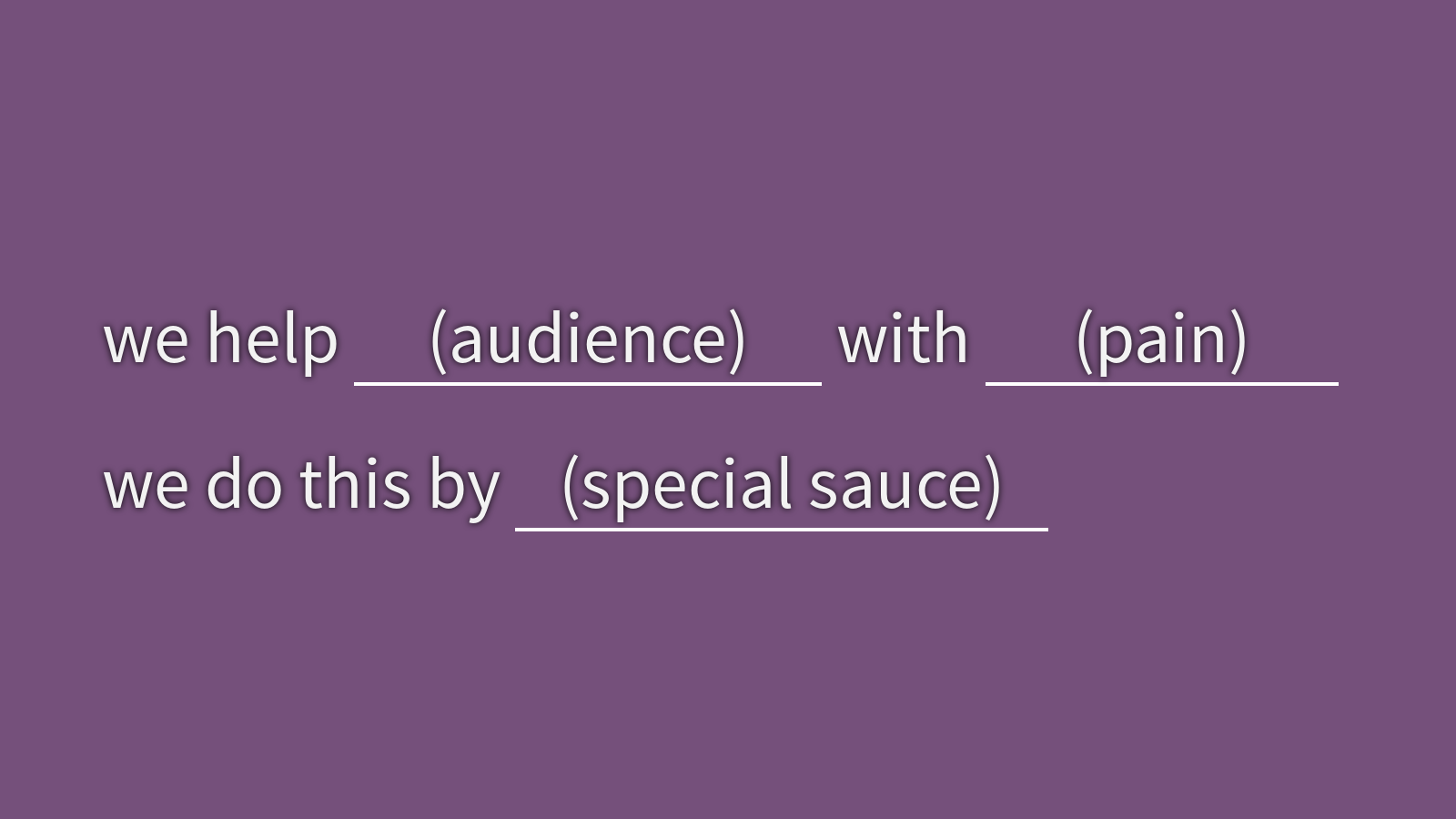
Take a piece of paper and fill in the blanks. The audience is the type of people or companies you serve. The pain is the big, expensive problem they have. And the special sauce is a product or service of yours, which helps them to solve their problem.
I know these sound really trivial, but trust me, they’re not. The audience has to be defined narrowly, otherwise you’re targeting everybody — which is nobody. The pain has to be an actual pain and one your client will actually spend time and money on. Something a lot of startups fail. And lastly there are many solutions to the problem. If you’re standing in the rain and are wet, an umbrella would solve this problem. As well as a fireplace and a hot tea.
If you’re having trouble, don’t feel bad — almost everyone does. It’s tough. And you don’t have to get it right 100%. Over time your clients will tell you whether you got it right or not. And if not, simply adjust it.
Now, this will be the base you build your website and the process upon.
Let’s have a look at a perfect landing page. The only goal of your landing page is the get your visitors into your process. And as such the whole page should be building toward and supporting the call to action.
Please don’t focus on design here, but focus on the individual elements. The elements have to be there, but you are completely free to choose whatever media or design they will be presented in.
We’ve just been talking about the value proposition. The headline should state the big, expensive problem, you’re solving for your clients. It will act as a hook, in order to get your audience interested to read on.
Below you can put a short subtitle stating who you are, who’s your audience and what you’re working on. It should give further insight on the headline above.
People need to know they have a problem before they buy a solution. That’s why we go into detail on the big, expensive problem your clients have. Then we flip it upside down and state how the dream world looks like without that problem. Additionally these sections give you the option to qualify your audience and disqualify poor leads.
Only now we can present our solutions which bring our clients from today’s painful world to a pain-free tomorrow. I recommend to add several solutions to this part, starting with a free product and going up to your most expensive offering. This is also known as product ladder, where you for example start with a free product like your newsletter or podcast, move on to an ebook, a training and then your consulting service or the like.
Now comes your big moment, the call to action, also known as CTA. It is the most important element on your page. The whole page builds up to this item, and by now you should have convinced your audience that your products or services are the right solution for their big, expensive problem. Of course you can’t sell these directly, so you opt for a mutual value exchange. This can be a small form to exchange an email address for a free report, a phone number or contact form.
I recommend to use the same CTA multiple times throughout the page, for example directly below the value proposition and after the testimonials.
On the right hand side we can find testimonials and snippets of your latest articles, talks or any other content which helps to establish yourself as an authority in your domain and is a great way to diminish objections.
And finally you can end the page with a lead magnet, like a free email course or newsletter for people who are not ready to buy yet.
The reason we do aim for the call to action is that your audience might be convinced that you’re able to help them solving their problem, but trust and connection is still missing. And as people normally only stay a very short time on websites, we extend the conversation, nurture the connection and exchange value.
It might sound complicated, but it’s really not. It comes down to a mutual value exchange. This can be many things, like a cheat sheet, an email course, a whitepaper or a short ebook on the big, expensive problem your clients have. And don’t think too complicated here, you only need to save them about 10 minutes of their time.
But this will do wonders in establishing your authority and eroding any trust barriers the client might erect.
Lastly, by giving away valuable content and helpful tips you establish trust and set yourself up as an expert in your domain. Only now you have all the ingredients to make a successful sale. And this being a process, it can be fully automated and scaled up.
Again, don’t think too complicated about this. It is enough send a few emails for example, sharing articles you find interesting or helpful, talking about recent projects you did or share something you learned. After all you’re the expert in your domain. And I don’t mean these spammy newsletters, but something like a personal email.

This email we did for a client of mine is a great example of a fully automated, personalized email, filled in with data of certain lead, but sent out to a huge list.
Of course there are many more, advanced and fancy things you can do, like automated email courses, automated qualifications, complete workflows and follow up’s and so on. But for a basic version this is enough.
Nobody is able to explain his idea or vision in just a few seconds. Following this process you get one very important thing: time. With time in your hands you can give your clients value, help them, and stay in contact.
It is important to see your website not as a static thing somewhere on the web, but as a part of your sales or outreach capabilities, as a process.
Only then you will be able to interact with your audience, your visitors and be able to help them to solve their problems.
Thank you.